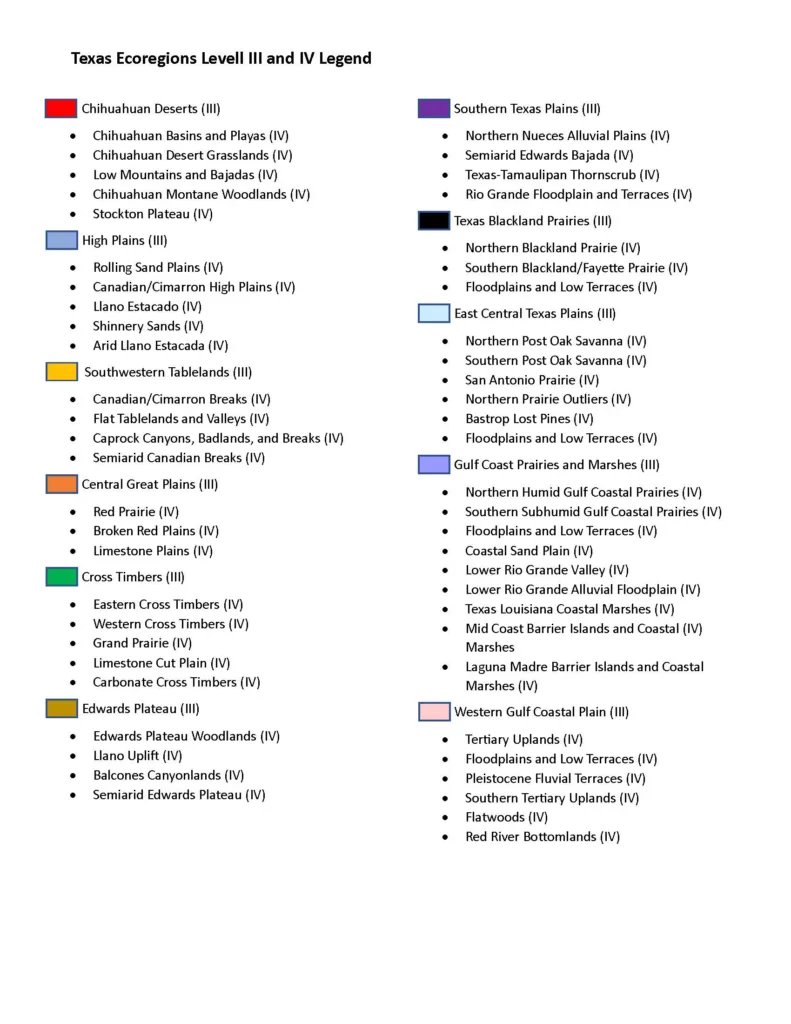Home » Resources » Why Native Plants? » Ecoregion Map
Due to its size and geographic location, Texas is unique among states. Covering 266,807 sq. miles, it is second only to Alaska in land area. A large area of land will usually have a great deal of variation in climate and landscapes, factors influencing habitat diversity. The state has impressive topographic diversity, including 91 mountain peaks that are a mile or more high.
Our geographic location is a crossroads where eastern habitats meet western ones and southern subtropical habitats meet northern temperate ones. The annual rainfall can range from 8 inches in the deserts of far west Texas to 56 inches per year in the swamps of east Texas.
Ecoregions denote areas of general similarity in ecosystems and in the type, quality, and quantity of environmental resources. Ecoregion frameworks are valuable tools for environmental research, assessment, management, and monitoring of ecosystems and ecosystem components. They have been used for setting resource management goals, developing biological criteria and establishing water quality standards.
The map below references USDA and Texas Parks & Wildlife ecoregion borders.

State Office Phone: 830.997.9272
State Office Address:
Native Plant Society of Texas
PO Box 3017
Fredericksburg, TX 78624
Become an important part of a statewide community with over 4,000 members, who are united in our mission to promote Texas native plants!
Native Plant Society of Texas is a 501(3)(c) nonprofit organization This website and all content Copyright © Native Plant Society of Texas. All rights reserved. Content may not be reprinted in whole or in part without written permission. Contact the Webmaster.